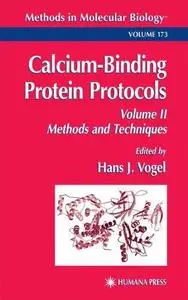Calcium-Binding Protein Protocols: Volume 2: Methods and Techniques By Michio Yazawa (auth.), Hans J. Vogel (eds.)
2002 | 415 Pages | ISBN: 0896036898 | PDF | 4 MB
2002 | 415 Pages | ISBN: 0896036898 | PDF | 4 MB
Calcium-binding proteins play an important role in a variety of vital biological processes, ranging from blood clotting and signal transduction in cells, to attaching proteins to membranes and serving as an integral source of calcium. In Calcium-Binding Protocols- Volume 1: Reviews and Case Histories and Volume 2: Methods and Techniques-Hans Vogel and a panel of leading researchers review the protein chemistry and behavior of this significant class proteins, and provide a comprehensive collection of proven experimental techniques for studying it both in vitro and in vivo. This second volume focuses on cutting-edge experimental techniques for studying the solution structure, stability, dynamics, calcium-binding properties, and biological activity of calcium-binding protein in general. In addition to enzymatic assays and more routine spectroscopic and protein chemistry techniques, there are also NMR approaches, thermodynamic analyses, kinetic measurements such as surface plasmon resonance, strategies for amino acid sequence alignments, and fluorescence methods to study the distribution of calcium and calcium-binding proteins in cells. The first companion volume, Reviews and Case Histories sets the stage for this volume by introducing the various classes of intra- and extracellular calcium-binding proteins and their mode of action. Comprehensive and highly practical, the two volumes of Calcium-Binding Protocols provide experimental and clinical biologists with a host of advanced experimental methods that can be applied successfully to the study of both existing and newly discovered members of this critically important class of proteins.



